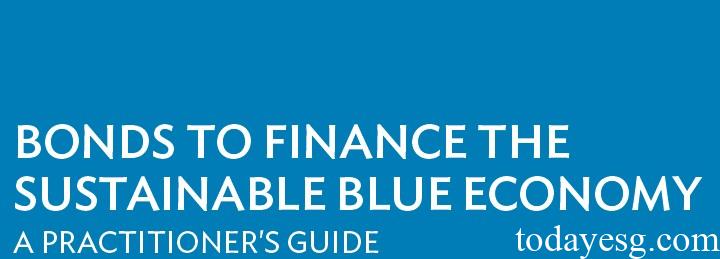Blue Bond Guidance
This article introduces the Blue Bond Guidance released by the International Capital Market Association (ICMA). As part of the focus on sustainable blue economy in green bonds, the Blue Bond Guidance combine the Green Bond Principles published by the International Capital Markets Association and relevant documents released by the United Nations Environment Programme Finance Initiative (UNEP FI) and the United Nations Global Compact.
The ocean, as an important global carbon sink, absorbs 31% of the world’s carbon dioxide annually and provides assistance for global climate stability. Marine related ecosystems provide food for 17% of the global population. People have realized the importance of protecting the ocean, and the 2022 Kunming-Montreal Global Biodiversity Framework plans to protect at least 30% of the world’s oceans and land by 2030.
Related Post: European Investment Bank Releases Blue Economy Report

Blue Bonds and Sustainable Blue Economy
The global issuance of sustainable bonds has reached $1 trillion in recent years, with 98% based on the principles released by the International Capital Market Association, with green bonds having the highest issuance volume. The International Capital Market Association considers blue bonds as part of green bonds, with a total of $5 billion in global issuances from 2018 to 2022. The issuers of blue bonds include sovereigns, international institutions, banks, and corporations. Blue bonds help issuers obtain financing in a sustainable blue economy and provide investors with opportunities to allocate sustainable blue assets.
The International Capital Market Association believes that based on the Green Bond Principles (GBP), the eligible projects involved in blue bonds include:
- Coastal Climate Adaptation and Resilience: Support the resilience and adaptation of coastal communities.
- Marine Ecosystem Management, Conservation, and Restoration: manage, protect, and restore the health of marine ecosystems.
- Sustainable Coastal and Marine Tourism: Improve the environmental sustainability of coastal and marine tourism.
- Sustainable Marine Value Chains: Improve the environmental sustainability of the marine value chain, such as sustainable fisheries management, sustainable aquaculture, sustainable seafood supply chains.
- Marine Renewable Energy: Increase the application of marine renewable energy, such as offshore wind, wave, tidal, floating solar and ocean thermal energy conversion.
- Marine Pollution: Prevent, control, and reduce waste entering the ocean, such as wastewater management, solid waste management, circular economy, and non-point source pollution management.
- Sustainable Ports: Improve the environmental performance and sustainability of port functions and infrastructure.
- Sustainable Marine Transport: Improve the environmental performance and sustainability of maritime transportation.
In addition to environmental impacts, blue bonds can also generate some positive social effects, such as improving health levels, reducing poverty, and promoting economic growth, which can be used for sustainability-linked bonds as Key Performance Indicators (KPIs).
Pre-issuance and Post-issuance of Blue Bonds
Different jurisdictions have different rules regarding bond issuance, and the International Capital Market Association provides relevant requirements for blue bond issuance that issuers can voluntarily comply with in the blue bond guidance.
Before issuing blue bonds, the bond issuer needs to develop a sustainable blue economy bond framework and explain how to ensure that the bonds can support the development of sustainable blue economy. The issuer also needs to disclose the eligible projects involved in the bond and the environmental and social risks associated with these projects. The issuer may consider hiring external auditors to enhance the credibility of information disclosure. The development of a bond framework and the appointment of external auditors are important recommendations in the Green Bond Principles.
After the issuance of blue bonds, the bond issuer needs to invest funds into specific eligible projects according to the documents and regularly disclose information on money allocation and impact. The issuer may engage external auditors to review the information in the report.
Reference:
New Guidance on Blue-Themed Bonds to Help Unlock Finance for a Sustainable Ocean Economy
ESG Advertisements Contact:todayesg@gmail.com








